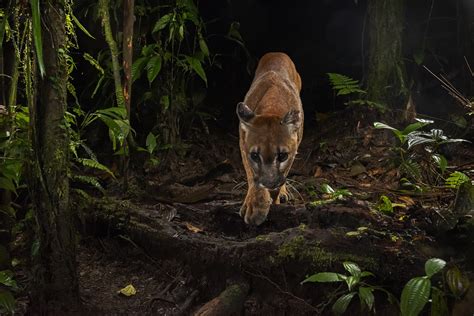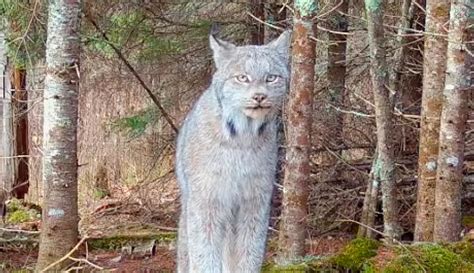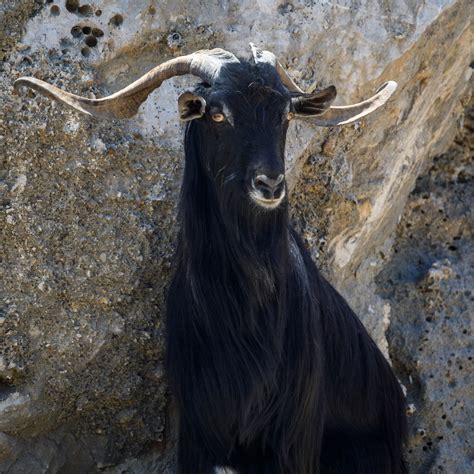
A rare gathering of gray wolves, including members from multiple packs, was captured on trail cameras in northeastern Washington, offering a unique glimpse into the social dynamics of these elusive creatures. Biologists are analyzing the footage to understand the reasons behind the unusual meeting and its potential implications for wolf management.
Trail camera footage has revealed an unprecedented gathering of gray wolves from multiple packs in the Kettle Range of northeastern Washington. The Washington Department of Fish and Wildlife (WDFW) confirmed the sighting, describing it as a rare and potentially significant event for understanding wolf behavior and population dynamics in the region. The images, captured by remote cameras strategically placed to monitor wildlife activity, show at least 11 wolves interacting in what appears to be a social gathering. This type of inter-pack interaction is rarely documented and has sparked considerable interest among wildlife biologists and conservationists.
“It’s unusual to see that many wolves from different packs interacting,” stated WDFW wolf biologist Trent Roussin, highlighting the rarity of the event. While wolves are known to live in structured packs with defined territories, interactions between different packs are typically aggressive, involving territorial disputes and competition for resources. This instance, however, appears to show a level of tolerance or even cooperation among the wolves, prompting researchers to investigate the potential drivers behind this atypical behavior. The specific location of the gathering is being kept confidential to protect the wolves from potential human interference.
The WDFW is carefully reviewing the footage to identify individual wolves and determine their pack affiliations. By analyzing markings, size, and other physical characteristics, biologists hope to understand which packs were represented at the gathering and the relationships between the individuals involved. This information could provide insights into the social structure of wolves in the Kettle Range and how different packs interact under specific circumstances. Understanding the factors that contribute to such gatherings is crucial for effective wolf management and conservation efforts.
Several hypotheses are being explored to explain the wolves’ behavior. One possibility is that the gathering was related to breeding season. Wolves typically breed in late winter, and it is conceivable that the meeting involved individuals from different packs seeking mates. However, the timing of the footage does not perfectly align with the peak breeding period, making this explanation less certain. Another hypothesis is that the wolves were responding to a particularly abundant food source, such as a large ungulate carcass, which might have temporarily overridden their territorial instincts. However, no evidence of a carcass was found near the location of the gathering.
A more intriguing possibility is that the wolves were engaging in some form of social bonding or information exchange. Wolves are highly intelligent and social animals, and it is conceivable that they sometimes gather to reinforce social bonds, share information about prey availability, or assess the strength of neighboring packs. Such gatherings could play a role in maintaining stability and reducing conflict within the wider wolf population. Whatever the reason, Roussin emphasizes, “It’s fascinating to see this kind of interaction, and it highlights how much we still have to learn about wolf behavior.”
The confirmed presence of gray wolves in Washington State dates back to 2008, when the Lookout Pack was documented in Okanogan County. Since then, the wolf population has steadily grown and expanded its range across the state. As of the end of 2023, the WDFW estimated that there were at least 216 wolves in 42 packs, with 23 successful breeding pairs. The recovery of wolves in Washington has been a conservation success story, but it has also presented challenges for wildlife managers and landowners. Wolf depredation on livestock remains a concern, and the WDFW has implemented various measures to mitigate conflict, including providing compensation to ranchers for livestock losses and assisting with non-lethal deterrents.
The increase in wolf population has led to ongoing debates about wolf management strategies. Some advocate for more aggressive measures to control wolf numbers, while others emphasize the importance of protecting wolves as a native species and a vital part of the ecosystem. The WDFW is committed to managing wolves in a way that balances the needs of both wolves and people, and the agency relies on scientific data and public input to inform its decisions. This unusual gathering underscores the complexity of wolf behavior and the need for continued research and monitoring to ensure effective wolf management in Washington State.
The trail camera footage provides valuable data for ongoing research projects focused on wolf behavior, population dynamics, and habitat use. Researchers are using GPS collar data, genetic analysis, and other tools to gain a deeper understanding of wolf ecology in Washington. The information gathered from these studies will help to inform management decisions and ensure the long-term conservation of wolves in the state. The footage also serves as a reminder of the importance of trail cameras as a tool for wildlife monitoring. These remote cameras can capture images and videos of animals in their natural habitat, providing valuable insights into their behavior and movements. Trail cameras are increasingly used by wildlife agencies, researchers, and citizen scientists to monitor a wide range of species, from wolves and bears to deer and birds.
The unexpected wolf gathering not only offers novel scientific insight but also generates public interest in wildlife conservation. Sharing footage and information with the public promotes greater understanding and appreciation for the natural world, which can lead to increased support for conservation efforts. By showcasing the beauty and complexity of wolf behavior, the WDFW hopes to inspire a sense of stewardship for these iconic animals and the landscapes they inhabit. The future of wolf management in Washington State depends on continued collaboration between scientists, policymakers, and the public. By working together, it is possible to ensure that wolves thrive in Washington for generations to come.
Expanded Information and Context
The significance of this wolf pack interaction lies in its deviation from typical wolf behavior. Wolves, as apex predators, maintain strict territorial boundaries enforced through vocalizations, scent marking, and, when necessary, physical confrontations with rival packs. The rare display of apparent tolerance, or even cooperative behavior, suggests that specific environmental or social factors might be at play, influencing the wolves’ decision-making processes. Understanding these factors can provide critical insights into wolf adaptability and social plasticity, which are essential for predicting how wolf populations will respond to environmental changes, habitat fragmentation, and human-induced pressures.
The monitoring of wolf populations in Washington State involves a multifaceted approach. The WDFW employs several methods to track wolf numbers, distribution, and behavior. Aerial surveys, conducted during the winter months, provide a broad overview of wolf pack locations and sizes. These surveys involve flying over known wolf territories and counting the number of individuals observed. GPS collar data is another essential tool for monitoring wolf movements and habitat use. Wolves are captured and fitted with GPS collars that transmit data on their location at regular intervals. This data is used to track their movements, identify their home ranges, and assess their interactions with other wolves and with humans.
Genetic analysis is also used to study wolf populations in Washington. DNA samples are collected from wolf scat (feces), hair, and tissue. These samples are analyzed to determine the genetic diversity of the wolf population, identify individual wolves, and track their lineage. Genetic data can also be used to assess the relatedness of different packs and to determine the origin of wolves that have dispersed from other states or provinces. The WDFW also relies on reports from the public to monitor wolf activity. Members of the public are encouraged to report wolf sightings, tracks, and other evidence of wolf presence. These reports are investigated by WDFW staff to verify the information and to track changes in wolf distribution.
The recovery of the gray wolf in Washington State is a complex and ongoing process. After being extirpated from the state in the early 20th century, wolves began to return to Washington in the early 2000s, primarily dispersing from neighboring states like Idaho and Montana, as well as from British Columbia. The natural recolonization of wolves is a testament to their resilience and adaptability, but it has also presented challenges for wildlife managers. One of the main challenges is managing wolf depredation on livestock. Wolves are opportunistic predators, and they will sometimes prey on domestic animals, particularly cattle and sheep. This can lead to conflicts with ranchers and other landowners, who may feel that wolves pose a threat to their livelihoods.
The WDFW has implemented a variety of measures to mitigate wolf-livestock conflict. These measures include providing compensation to ranchers for livestock losses caused by wolves, assisting ranchers with the implementation of non-lethal deterrents, and, in some cases, lethally removing wolves that have repeatedly preyed on livestock. Non-lethal deterrents include things like fladry (flags attached to fences), range riders, and livestock guard dogs. Fladry is a visual deterrent that consists of brightly colored flags attached to fences. The flags wave in the wind and create a visual barrier that wolves are often reluctant to cross. Range riders are people who patrol grazing areas on horseback or on foot, monitoring livestock and deterring wolves from approaching. Livestock guard dogs are dogs that are specifically trained to protect livestock from predators. These dogs live with the livestock and will bark, growl, and even attack wolves to protect their charges.
The decision to lethally remove wolves is always a last resort, and it is only used in cases where non-lethal deterrents have failed to prevent depredation. The WDFW has a strict protocol for lethal removal, which requires that certain criteria be met before a wolf can be killed. These criteria include evidence that wolves have repeatedly preyed on livestock, that non-lethal deterrents have been implemented and have failed, and that the removal of the wolf will not jeopardize the long-term survival of the wolf population.
The management of wolves in Washington State is guided by the state’s Wolf Conservation and Management Plan. This plan, which was developed with input from a wide range of stakeholders, outlines the goals and objectives for wolf management in the state. The plan includes provisions for protecting wolves, mitigating wolf-livestock conflict, and educating the public about wolves. The plan is regularly reviewed and updated to reflect new scientific information and changing social values. The plan aims to maintain a healthy and sustainable wolf population while minimizing conflict with humans. The successful implementation of the plan requires collaboration and cooperation between scientists, policymakers, landowners, and the public.
The role of trail cameras in wildlife monitoring has expanded significantly in recent years. These cameras, which are triggered by motion or heat, can capture images and videos of animals in their natural habitat without disturbing them. Trail cameras are used for a wide range of purposes, including monitoring wildlife populations, studying animal behavior, and detecting the presence of rare or endangered species. The images and videos captured by trail cameras can provide valuable data for researchers and wildlife managers. They can be used to track animal movements, identify individual animals, and assess the health and condition of wildlife populations. Trail cameras can also be used to monitor human activity in wildlife areas, such as illegal hunting or poaching.
Citizen science projects are increasingly using trail cameras to collect data on wildlife populations. These projects involve members of the public in the collection and analysis of data. Citizen scientists can set up trail cameras in their backyards or in other areas where they have permission to do so. They can then upload the images and videos to a central database, where they can be analyzed by researchers. Citizen science projects can generate large amounts of data, which can be used to track changes in wildlife populations over time. They can also help to raise public awareness about wildlife conservation.
The use of artificial intelligence (AI) is also revolutionizing wildlife monitoring. AI algorithms can be trained to identify animals in trail camera images and videos. This can significantly reduce the amount of time it takes to analyze the data collected by trail cameras. AI can also be used to detect subtle changes in animal behavior that might be missed by human observers. The combination of trail cameras and AI is providing new insights into wildlife ecology and behavior. It is also helping to make wildlife monitoring more efficient and cost-effective. As technology continues to advance, it is likely that trail cameras will play an even greater role in wildlife conservation in the future.
The gray wolf, Canis lupus, is a highly adaptable and social animal found in a wide range of habitats across North America, Europe, and Asia. Wolves typically live in packs, which are family groups consisting of a breeding pair and their offspring. The pack works together to hunt, raise pups, and defend their territory. Wolves are apex predators, meaning that they are at the top of the food chain. They play an important role in regulating prey populations and maintaining the health of ecosystems. Wolves primarily prey on large ungulates, such as deer, elk, and moose. They also eat smaller animals, such as rabbits, rodents, and birds. In some areas, wolves may also prey on livestock.
Wolves communicate with each other through a variety of vocalizations, including howls, barks, growls, and whimpers. They also use body language, such as posture, facial expressions, and tail movements, to communicate with each other. Scent marking is another important form of communication for wolves. Wolves will urinate and defecate in prominent locations to mark their territory and to leave messages for other wolves. Wolves are highly intelligent animals, and they are capable of learning complex tasks. They are also known for their strong social bonds and their ability to cooperate with each other.
The conservation of wolves is important for maintaining the health of ecosystems. Wolves help to regulate prey populations, which can prevent overgrazing and maintain the biodiversity of plant communities. Wolves also scavenge on carcasses, which helps to recycle nutrients and reduce the spread of disease. The presence of wolves can also benefit other wildlife species. For example, wolves can help to control populations of coyotes, which can prey on smaller animals, such as foxes and rabbits. The reintroduction of wolves to Yellowstone National Park in the 1990s has had a positive impact on the park’s ecosystem. The wolves have helped to reduce populations of elk, which had been overgrazing the park’s vegetation. This has led to an increase in the abundance of other wildlife species, such as beavers and songbirds.
The future of wolf management in Washington State depends on continued collaboration between scientists, policymakers, landowners, and the public. By working together, it is possible to ensure that wolves thrive in Washington for generations to come. This includes addressing concerns about livestock depredation, promoting non-lethal deterrents, and educating the public about the ecological role of wolves. It also involves supporting research on wolf behavior and population dynamics and adapting management strategies as new information becomes available.
The reported rare gathering of multiple wolf packs in northeastern Washington underscores the importance of ongoing research and monitoring efforts to fully understand wolf behavior and population dynamics. The trail camera footage offers a fascinating glimpse into the social lives of these animals and highlights the need for continued conservation efforts to ensure their long-term survival in the state.
Frequently Asked Questions (FAQs)
Q1: What makes this gathering of wolves unusual?
A1: The gathering is unusual because wolves typically live in structured packs with defined territories, and interactions between different packs are generally aggressive due to territorial disputes and competition for resources. This event showed a level of tolerance or even cooperation among wolves from multiple packs, which is rarely documented. WDFW wolf biologist Trent Roussin stated, “It’s unusual to see that many wolves from different packs interacting,” emphasizing the rarity.
Q2: Where did this gathering of wolves occur, and why is the location being kept secret?
A2: The wolf gathering occurred in the Kettle Range of northeastern Washington. The specific location is being kept confidential by the Washington Department of Fish and Wildlife (WDFW) to protect the wolves from potential human interference, such as hunting or harassment.
Q3: What are some of the possible reasons for this rare inter-pack interaction?
A3: Several hypotheses are being explored:
- Breeding Season: The meeting could be related to wolves from different packs seeking mates.
- Abundant Food Source: A large ungulate carcass might have temporarily overridden their territorial instincts.
- Social Bonding or Information Exchange: Wolves might have been reinforcing social bonds, sharing information about prey availability, or assessing the strength of neighboring packs.
Q4: How is the Washington Department of Fish and Wildlife (WDFW) studying this event?
A4: The WDFW is analyzing the trail camera footage to identify individual wolves and determine their pack affiliations. By analyzing markings, size, and other physical characteristics, biologists hope to understand which packs were represented and the relationships between the individuals involved. They also use GPS collar data, genetic analysis, and other tools to gain a deeper understanding of wolf ecology.
Q5: What is the current status of the gray wolf population in Washington State?
A5: As of the end of 2023, the WDFW estimated that there were at least 216 wolves in 42 packs, with 23 successful breeding pairs. The wolf population has steadily grown and expanded its range across the state since the first pack was documented in 2008. The WDFW continues to monitor the population and manage wolf-livestock conflicts through various mitigation measures.









